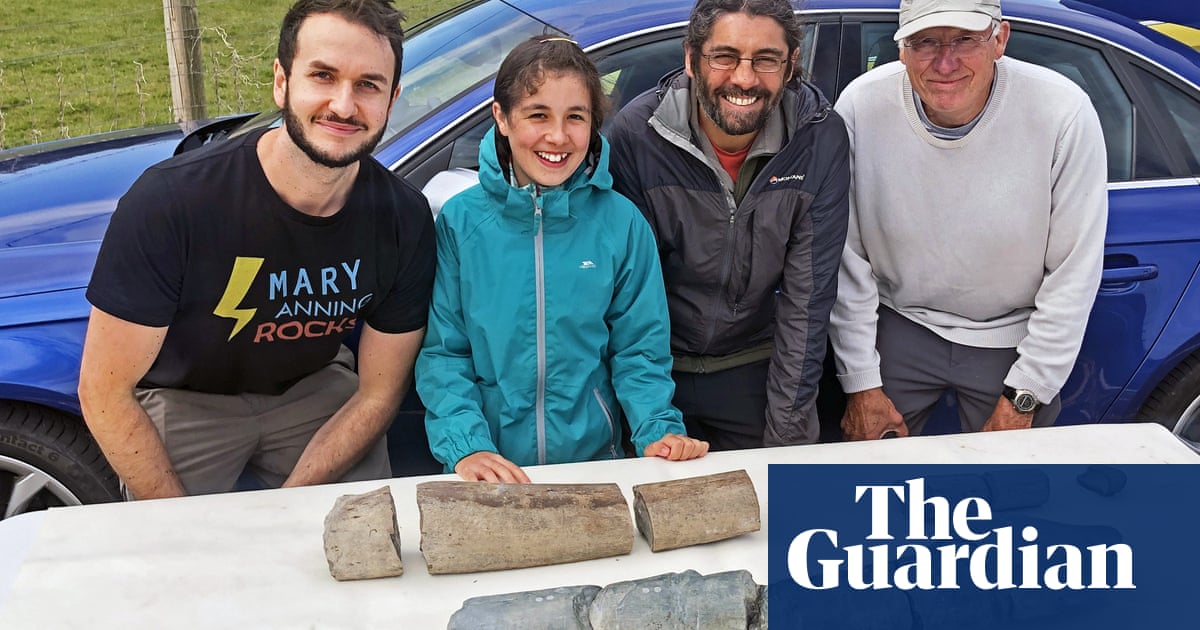The fossils are thought to be from a type of ichthyosaur, a prehistoric marine reptile that lived in the time of dinosaurs. The newly discovered species is believed to have roamed the seas towards the end of the Triassic, about 202m years ago.
The team have named the species Ichthyotitan severnensis, meaning “giant fish lizard of the Severn”.
“This giant probably represents the largest marine reptile formally described,” said Dr Dean Lomax, a palaeontologist at the University of Bristol and co-author of the research, adding that comparisons with fossils from other ichthyosaurs suggested the creature would have been about 25 metres in length – about the size of a blue whale.
“Of course, we have to be careful with such estimates because we are dealing with fragments of giant bones,” he added. “But nonetheless, simple scaling is commonly used to estimate size, especially when comparative material is scarce.”
The team say samples from the fossils suggest the creature was still growing. And there is another twist.
“We believe these ichthyosaurs are the last surviving members of the family called shastasaurida, which went extinct during the global mass extinction event at the end of the Triassic,” said Lomax.
Writing in the journal Plos One, Lomax and colleagues report how the first pieces of the jawbone were discovered by Justin Reynolds and his daughter Ruby – co-authors of the paper – on the beach at Blue Anchor in May 2020, when Ruby was 11.
This is the best summary I could come up with:
Fossils discovered by an 11-year-old girl on a beach in Somerset may have come from the largest marine reptile ever to have lived, according to experts.
“This giant probably represents the largest marine reptile formally described,” said Dr Dean Lomax, a palaeontologist at the University of Bristol and co-author of the research, adding that comparisons with fossils from other ichthyosaurs suggested the creature would have been about 25 metres in length – about the size of a blue whale.
Among those who also joined the hunt was Paul de la Salle, an expert from the Museum of Jurassic Marine Life in Dorset who in 2016 had discovered a jawbone from what appeared to be a new species of ichthyosaur at a beach in Somerset.
When the team fitted the fragments of the new fossil together they found it belonged to the same species as the specimen discovered by De la Salle.
In both cases the fossilised bone is the surangular – a long, curved structure that sits at the top and back of the lower jaw.
Dr Nick Fraser, a palaeontologist at National Museums Scotland, who was not involved in the study, said the identification of the bone as part of the lower jaw from an ichthyosaur was very convincing.
The original article contains 562 words, the summary contains 210 words. Saved 63%. I’m a bot and I’m open source!


